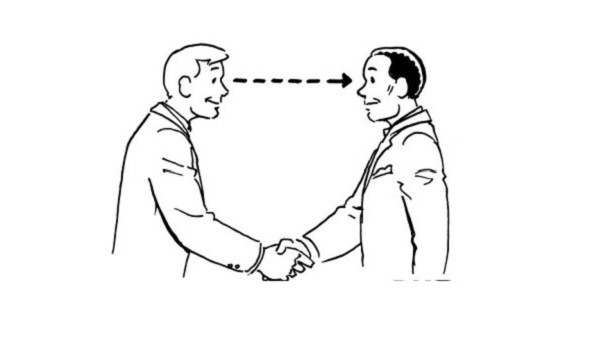PUBLIC SPEAKING: EYE CONTACT OR WHAT ARE OUR EYES COMMUNICATING
Imagine that everything we communicate is constructed like an iceberg: we can see some mountains above the surface, but the vast majority cannot be seen, as it hides below the surface. In communication, the part below the surface is nonverbal communication that affects people around us on an unconscious level (previous post).
As we already wrote in our previous blog, non-verbal communication, or body language, includes facial expressions and, with it, eye contact. The American company CareerBuilder is the company which has been at the forefront of innovation in the use of data and technology for human capital development for more than 20 years. They conducted a survey of what managers notice most in body language when interviewing a job candidate. They found that as many as 67% of managers surveyed notice if a candidate does not make eye contact.
We’ve all noticed this kind of flaw in others before: a nervous speaker talking to a sheet of paper or to the floor. A politician who, while speaking, has a great relationship with his notes rather than people in seats. A PowerPoint presentation user that has a dialogue with a screen while sadly ignoring his audience. On some unconscious level, all of this confuses us – the ones who are listening. It also causes us to start ignoring the actual content and makes us think things like: does the person even know what he’s saying, or is he telling the truth, and maybe he’s trying to cover something up?
Avoiding eye contact can also have a more aggressive message: ignoring or disagreeing. Watch the clip below and see Angela Merkel, in a meeting with Turkish President Erdogan, repeatedly trying to make eye contact, but without success. Erdogan chose to ignore her eye contact as he disagreed with her comment.
Obviously, slips (or deliberate nonverbal disagreements) also happen to the greatest professionals, such as Elizabeth II Queen of England. Another example lies in the video below, which clearly shows the queen’s contempt for the choice of the visitor’s footwear, she tried to show through facial expressions and eye contact.
Eye contact is a medium of information – use it!


